This post may contain affiliate links, which means I’ll receive a commission if you purchase through my links, at no extra cost to you. Please read full disclosure here.
In Korean, subject markers are super important because they tell you who or what is doing the action in a sentence. These particles are attached directly to nouns.
Subject Marking Particles 이 and 가
- 이 (i) is used when the noun ends in a consonant.
- 가 (ga) is used when the noun ends in a vowel.
이 examples (for nouns ending in a consonant):
- 책 + 이 (chaek + i) = 책이
- 문 + 이 (mun + i) = 문이
- 집 + 이 (jip + i) = 집이
- 강 + 이 (gang + i) = 강이
- 눈 + 이 (nun + i) = 눈이
- 공 + 이 (gong + i) = 공이
- 밥 + 이 (bap + i) = 밥이
- 꽃 + 이 (kkot + i) = 꽃이
- 밤 + 이 (bam + i) = 밤이
- 산 + 이 (san + i) = 산이
가 examples (for nouns ending in a vowel):
- 나무 + 가 (namu + ga) = 나무가
- 바다 + 가 (bada + ga) = 바다가
- 아빠 + 가 (appa + ga) = 아빠가
- 우유 + 가 (uyu + ga) = 우유가
- 모자 + 가 (moja + ga) = 모자가
- 머리 + 가 (meori + ga) = 머리가
- 고기 + 가 (gogi + ga) = 고기가
- 사과 + 가 (sagwa + ga) = 사과가
- 토끼 + 가 (tokki + ga) = 토끼가
- 주스 + 가 (juseu + ga) = 주스가









